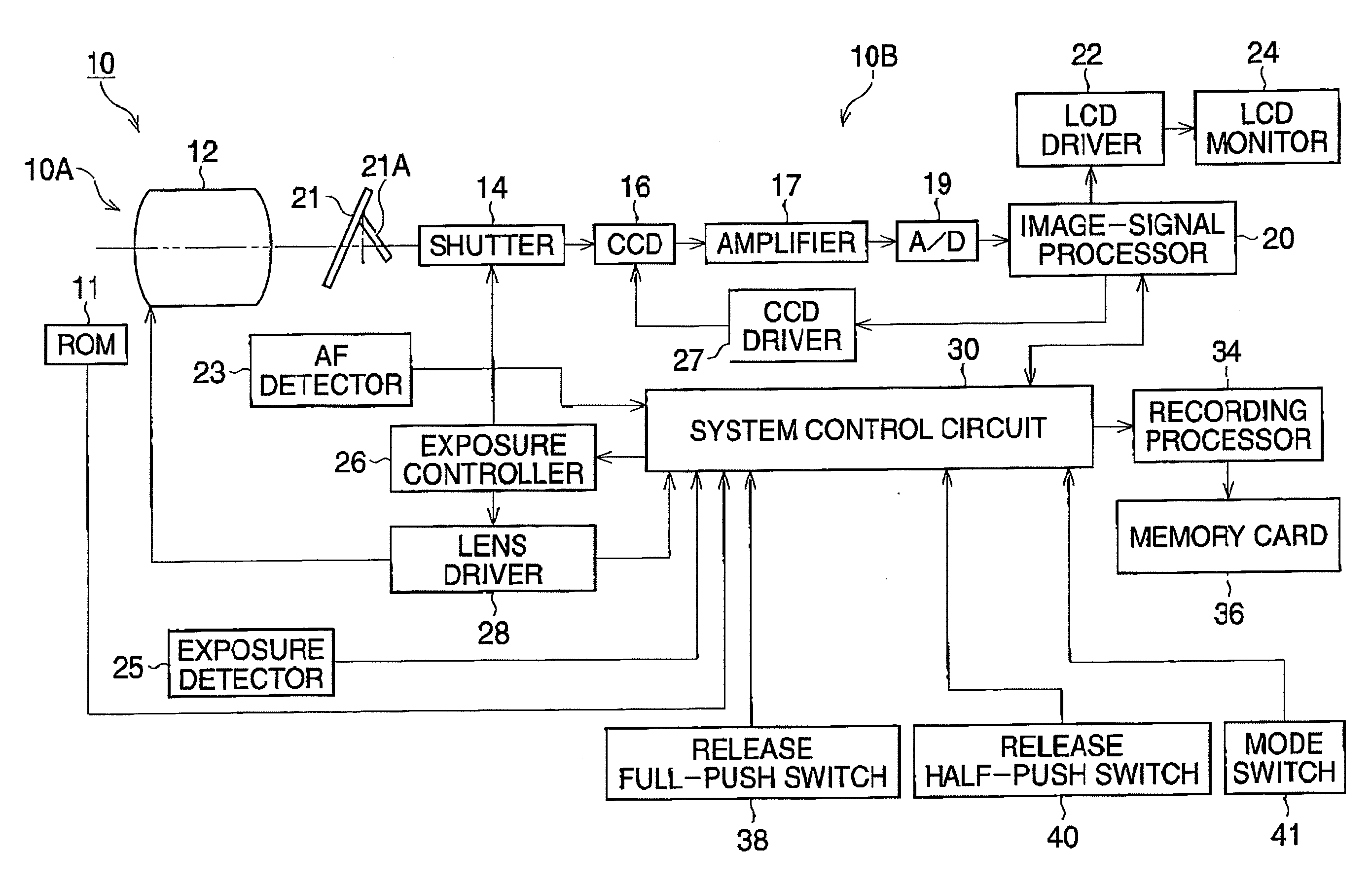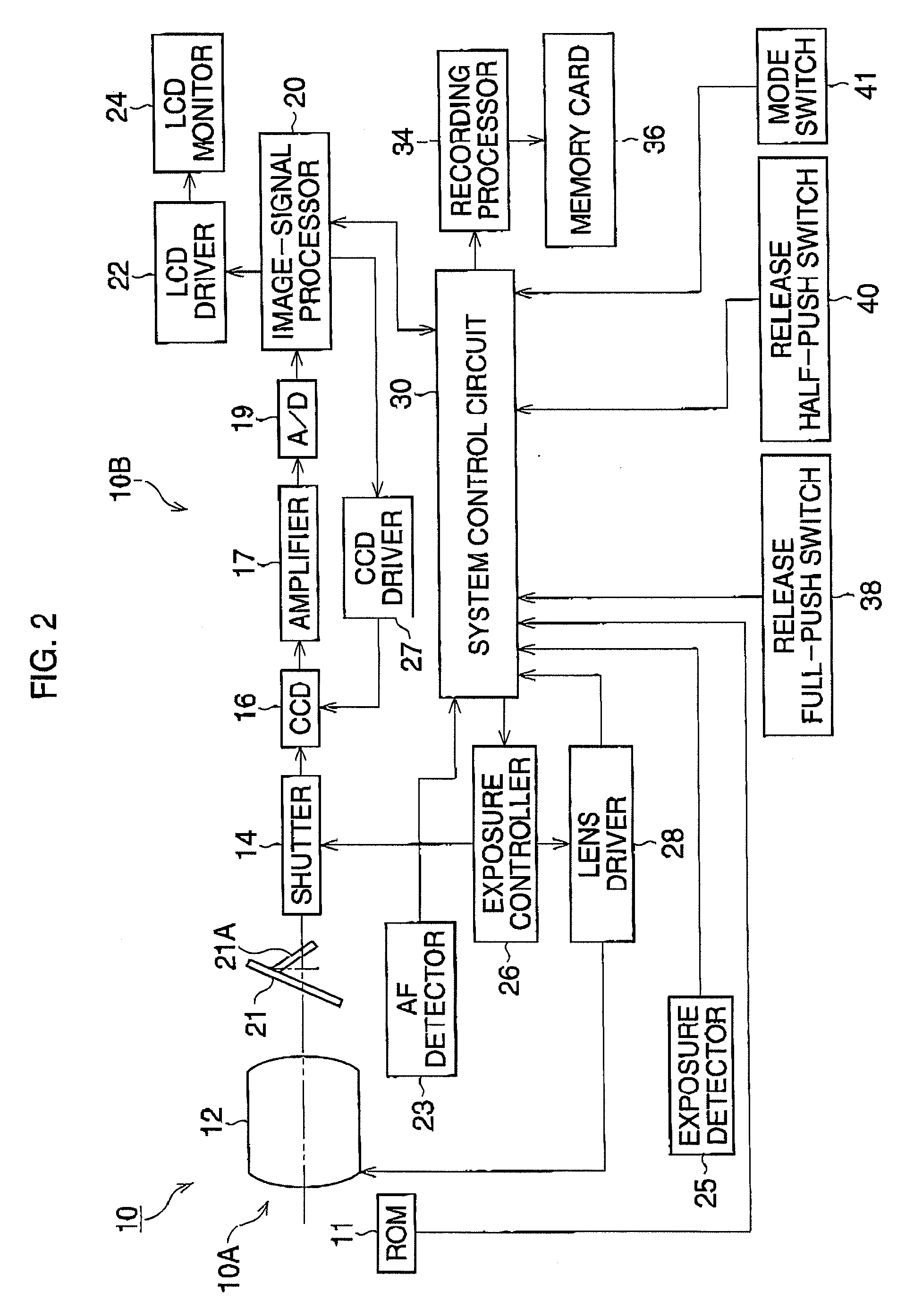Camera
a technology of interchangeable lenses and cameras, applied in the field of cameras, can solve the problems of excessive large amount of distortion aberration data, image distortion occurring in pictures, etc., and achieve the effect of accurately correcting image distortion and restricting the amount of data necessary for distortion correction
- Summary
- Abstract
- Description
- Claims
- Application Information
AI Technical Summary
Benefits of technology
Problems solved by technology
Method used
Image
Examples
first embodiment
[0027]FIG. 1 is a schematic perspective view of a digital camera according to a
[0028]An SLR-type digital camera 10 is equipped with an interchangeable lens unit 10A, which is removably attached to a camera body 10B. A release button 15 is operated by the user to take a picture, and a mode dial 13 is operated to set picture mode or playback mode. In the lens unit 10A, a photographic optical system (not shown) with a zoom lens is provided. Zooming can be performed in AF (Auto Focus) mode or MF (Manual Focus) mode.
[0029]FIG. 2 is a block diagram of the digital camera 10 according to the present embodiment.
[0030]The digital camera 10 is equipped with an image-signal processor 20 and a system control circuit 30, and a memory card 36 is removably installed in the camera body 10B. The system control circuit 30, including a CPU, a ROM unit and a RAM unit, connects with a release full-push switch 38, a release half-push switch 40, and a mode switch 41. The system control circuit 30 detects a...
second embodiment
[0065]In the second embodiment, the number “m” of sample values of image heights and corresponding distortion aberrations is stored in the ROM 11. For example, three sample values of image heights and distortion aberrations as shown in the following table are stored. The sample values are measured in advance at approximately 5 mm intervals, and these sample values are prepared for each focal length.
123IMAGE HEIGHT (mm)51014.2DISTORTION0.1670.6951.493ABERRATION (%)
[0066]When a picture is taken, the number “m” of image heights and distortion aberrations is selected according to focal length, and a linear approximation function is defined from plots of the selected sample data. As shown an FIG. 9, the linear approximation function is defined by joining the plots. Based on this linear approximation function, the distortion aberration D is calculated at each image height, i.e., for each pixel. Then, the distortion correction process shown in FIG. 7 is carried out.
[0067]As shown in FIG. 1...
PUM
 Login to View More
Login to View More Abstract
Description
Claims
Application Information
 Login to View More
Login to View More - R&D
- Intellectual Property
- Life Sciences
- Materials
- Tech Scout
- Unparalleled Data Quality
- Higher Quality Content
- 60% Fewer Hallucinations
Browse by: Latest US Patents, China's latest patents, Technical Efficacy Thesaurus, Application Domain, Technology Topic, Popular Technical Reports.
© 2025 PatSnap. All rights reserved.Legal|Privacy policy|Modern Slavery Act Transparency Statement|Sitemap|About US| Contact US: help@patsnap.com



